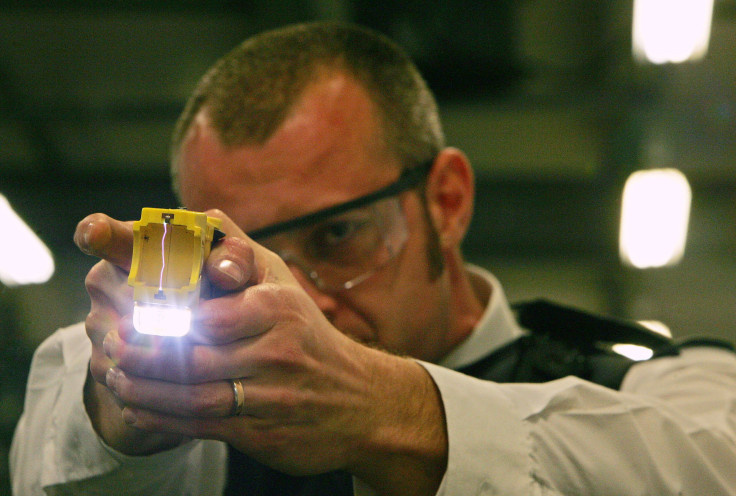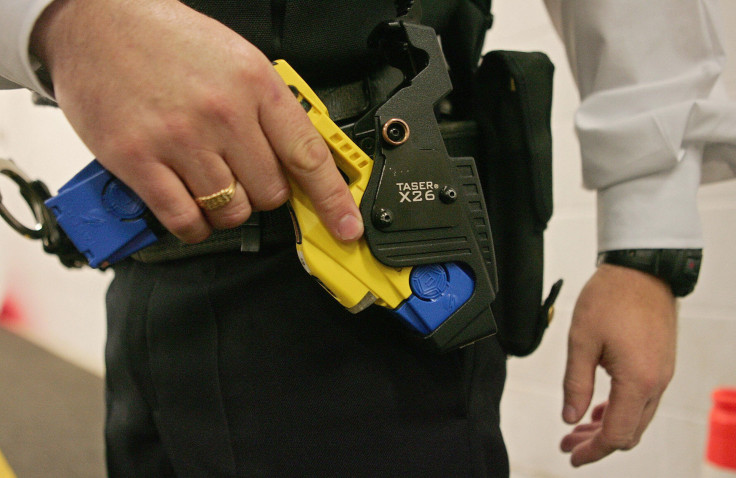Are Tasers Non-Lethal? Oakland Police Investigates In-Custody Death Involving Stun Gun

The Oakland Police Department has launched a probe into an in-custody death involving the use of Taser.
Along with the Internal Affairs Division, the police department is investigating the incident that occurred at 2.26 p.m. local time (5.26 p.m. EDT) on Thursday in 4100 Block of Foothill Boulevard, Oakland, California. The Alameda County District Attorney’s Office is conducting an independent, parallel investigation on the matter. The coroner’s office is yet to release a formal cause of death.
Suspect died in OPD custody this afternoon after Taser use: pic.twitter.com/lJaqleEH0M
— Scott Morris ☀️ (@OakMorr) September 29, 2017
The concept of an electronic control device is centered on the idea that potentially violent confrontations should be resolved without using deadly force whenever possible. The best-known and most successful ECD to date is believed to be the Taser, which is manufactured and distributed by Axon, formerly known as Taser International, an Arizona-based company that develops products for the law enforcement agencies.
A Taser projects two metal darts, called probes, by electrically charging a cartridge of compressed gas. Thin copper wires connect the probes to the device that carry an electric charge to the target. A maximum of 50,000 volts can be shot inside the body of the suspect, which temporarily incapacitates him or her.
Around 18,000 police departments across the U.S. issue officers Tasers, or stun guns, to equip officers with non-lethal means to subdue suspects. However, these guns often prove to be fatal for the suspects, if not used properly.
In a detailed survey carried out by Reuters, it was found there have been more than 1,000 incidents in the United States, where the suspects died after police stunned them using a Taser since the 2000s. About a quarter of the victims who succumbed to the use of Taser were mentally ill and in nine out of ten cases, the deceased was unarmed.

Meanwhile, the company which manufactures the seemingly non-lethal weapons has maintained that their products can never be solely blamed for a person’s death. Factors like drug use, physiological conditions such as heart problems, or other police force used along with a Taser, have to be taken into account too.
Despite maintaining that not a single person has died from the direct effects of a Taser inducing powerful shock to the heart or body, the company admitted to 18 people succumbing to fatal head or neck injuries after a fall caused by a Taser strike, and six deaths from fires sparked by the weapon’s electrical arc.
One of the reasons behind no one raising a hue and cry about deaths caused by the use of Taser might be because no government agency tracks fatalities in police incidents where stun guns are used. Peter Eisler, one of the reporters who conducted the survey for Reuters, told PBS Newshour that even the quality and threat-levels of the stun guns were not regulated by a public commission or the police department themselves.
“So, the weapons themselves are not regulated, not as they’re sold to police,” Eisler said. “You know, they’re not a medical device. They’re not regulated by the FDA. They’re not a consumer product, so they’re not regulated by the Consumer Product Safety Commission.”
“So, taser itself has done a lot of them — did a lot of the early testing on these devices, and one of the things that we found was that those tests were not necessarily as thorough or as solid as taser may have led police to believe,” he added.
However, Eisler said the found the technology of a Taser gun has improved over the years, hinting it was safer now than it was in the past. “The weapon has evolved over time,” Eisler said. “The newer ones Taser says are safer than earlier generations of the weapon… What we have started to see in recent years is police departments beginning to refine their policies and kind of close the window of when they tell officers that it is acceptable to use one of these things.”
© Copyright IBTimes 2024. All rights reserved.






















